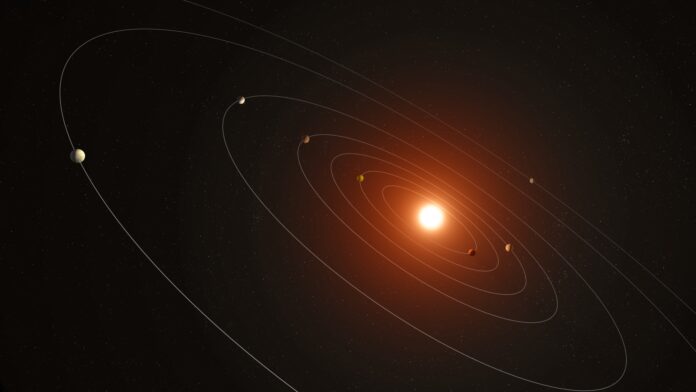Continuous study of data from NASA’s retired Kepler space telescope has revealed a system of seven scorching planets named Kepler-385. These planets are more significant than Earth but smaller than Neptune and have more radiant heat per area from their host star than any planet in our solar system.
The system is one of the few with more than six verified planets or planet candidates.
The star at the center of the Kepler-385 system is similar to our Sun but 10% larger and 5% hotter than the Sun. The two inner planets are likely rocky with thin atmospheres, whereas the other five planets- each with a radius about twice the size of Earth’s- have thick atmospheres.
A detailed description of the Kepler-385 system can be found in the most recent exoplanet catalog. With the accurate information this new catalog offers on each planetary system, systems like Kepler-385 can be found.
The catalog more precisely determines each planet’s journey by using improved measurements of star characteristics. An intriguing discovery indicates that stars with several transiting planets typically have more circular orbits than stars with just one or two planets.
Jack Lissauer, a research scientist at NASA‘s Ames Research Center in California’s Silicon Valley, said, “We’ve assembled the most accurate list of Kepler planet candidates and their properties to date. NASA’s Kepler mission has discovered most known exoplanets, and this new catalog will enable astronomers to learn more about their characteristics.”
Following Kepler’s initial observations in 2013, the telescope’s extended mission, K2, was carried out until 2018. Kepler’s data collection continues to yield fresh insights into our cosmos. This new analysis provides a more thorough picture of each planet and its home system, enhancing our understanding of the numerous worlds outside our solar system and confirming what the mission has revealed—that there are more planets than stars.
